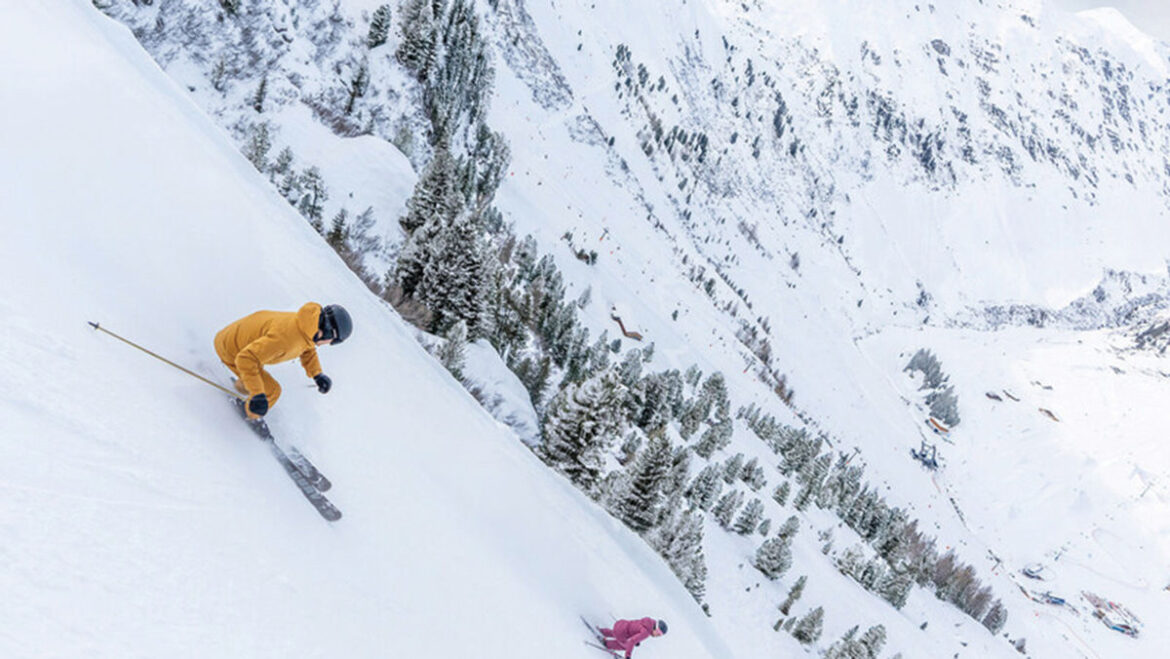With the large majority of the most prestigious ski resorts in the U.S. and Canada already associated with a major ski pass, and with more Americans than ever crossing oceans for their ski vacations, the Epic and Ikon passes are increasingly focusing expansion on Europe and Japan.
This year, all six of the mountains added by Vail Resorts’ Epic Pass are located in Austria. The additions bring Epic’s total European offerings to 34, including the Crans-Montana and Andermatt resorts that Vail owns in Switzerland.
At Alterra Mountain Co., two European ski resorts and nine Asian resorts are among 18 additions to its Ikon Pass this year. The two European mountains, Valle d’Aosta in Italy and Ischgl in Austria, bring Ikon’s Alps offering to 23. And of the nine new offerings in Asia, seven are in Japan, where Ikon now has nine pass partners compared to Epic’s 11.
Stuart Winchester, author and host of the Storm Skiing Journal and Podcast, said that in looking abroad, Epic and Ikon are going where the pass market is less saturated than in the U.S.
“You are seeing Vail and Alterra act in the same manner that the leading American tech companies do,” he said. “They take a proven concept that works in North America and they adapt it to less-mature markets.”
But in putting more emphasis on the European and Japanese Alps, Ikon and Epic are also reacting to the evolving tastes of U.S. skiers and snowboarders, who are more willing than ever to schlep their snow gear to a different continent.
As of Nov. 18, Ski.com, the largest ski vacation packager in the U.S., had seen a 30% year-over-year increase in its number of European ski trip bookings. Japan bookings were up 10%, and that’s on top of a 51% year-over-year increase on the same date in 2024. U.S. bookings were up 7% this year.
Cat Iwanchuk, Ski.com’s vice president of business development, said the relative affordability of international ski trips is a key contributor to their growing popularity.
For example, a Ski.com package trip from Boston to Val Gardena in the Italian Dolomites for six nights in March, including flight, transfers, four days of rentals, skiing and guides for two people, priced out at $10,700 in mid-November. That compares to $9,900 for the equivalent trip to Utah’s Deer Valley, $14,600 for Montana’s Big Sky and just $8,400 for Setsu Niseko in Japan. All prices assume the travelers have prepurchased Ikon passes.
“What used to be a bucket-list trip is no longer once in a lifetime. It’s actually something that is now feasible for Joe Shmoe skier with an average budget,” Iwanchuk said. “It’s actually similar in cost to Colorado, Utah or California.”
Though Japan remains more of a once-in-a-lifetime destination for most U.S. skiers than Europe, Iwanchuk said that, in general, Ski.com is seeing more customers journey beyond the best-known international ski destinations as Epic and Ikon expand their offerings.
To wit, last year France’s Chamonix and Switzerland’s Zermatt, both Ikon mountains, accounted for half of Ski.com’s European reservations. This year, that number is down to 38%. Though Ski.com does lots of bookings for Epic Pass holders, its figures skew toward Ikon partners since the company handles ski packages booked within Ikon platforms.
“People are getting more confident in entertaining something maybe they’ve never heard of,” Iwanchuk said.
Epic and Ikon aren’t the only U.S. passes that have increasingly turned global. Indy Pass, which typically partners with smaller mountains than its larger competitors, has too, adding 19 partners in Asia, Europe and South America this season.
Aside from price and adventure, Winchester said Europe and Japan offer experiences that in some ways are just better than those found in the U.S.
For example, skiing is more interwoven into the broader culture in the European Alps than it is in the U.S., with many ski areas easily accessible by rail.
Meanwhile, Japan is renowned for its light powder and the consistency of its snowfall in January and February.
But along with keeping up with surging North American skier demand for Europe and Japan, Vail and Alterra are hoping to draw more international visitors to their own mountains by growing the international reach of their pass products, according to Winchester.
“It’s really the only pathway that international visitors have into the U.S. market that’s not exorbitantly expensive,” he said, referencing the cost of walk-up lift tickets at destination U.S. ski areas, which are often close to or in excess of $300 and multiple times more expensive than lift tickets in the Alps and Japan.


AloJapan.com